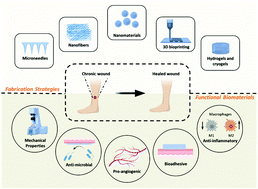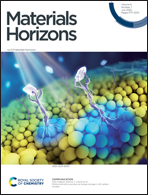Leveraging the advancements in functional biomaterials and scaffold fabrication technologies for chronic wound healing applications
Abstract
Exploring new avenues for clinical management of chronic wounds holds the key to eliminating socioeconomic burdens and health-related concerns associated with this silent killer. Engineered biomaterials offer great promise for repair and regeneration of chronic wounds because of their ability to deliver therapeutics, protect the wound environment, and support the skin matrices to facilitate tissue growth. This mini review presents recent advances in biomaterial functionalities for enhancing wound healing and demonstrates a move from sub-optimal methods to multi-functionalized treatment approaches. In this context, we discuss the recently reported biomaterial characteristics such as bioadhesiveness, antimicrobial properties, proangiogenic attributes, and anti-inflammatory properties that promote chronic wound healing. In addition, we highlight the necessary mechanical and mass transport properties of such biomaterials. Then, we discuss the characteristic properties of various biomaterial templates, including hydrogels, cryogels, nanomaterials, and biomolecule-functionalized materials. These biomaterials can be microfabricated into various structures, including smart patches, microneedles, electrospun scaffolds, and 3D-bioprinted structures, to advance the field of biomaterial scaffolds for effective wound healing. Finally, we provide an outlook on the future while emphasizing the need for their detailed functional behaviour and inflammatory response studies in a complex in vivo environment for superior clinical outcomes and reduced regulatory hurdles.

- This article is part of the themed collection: Editor’s Choice: Tissue Engineering


 Please wait while we load your content...
Please wait while we load your content...